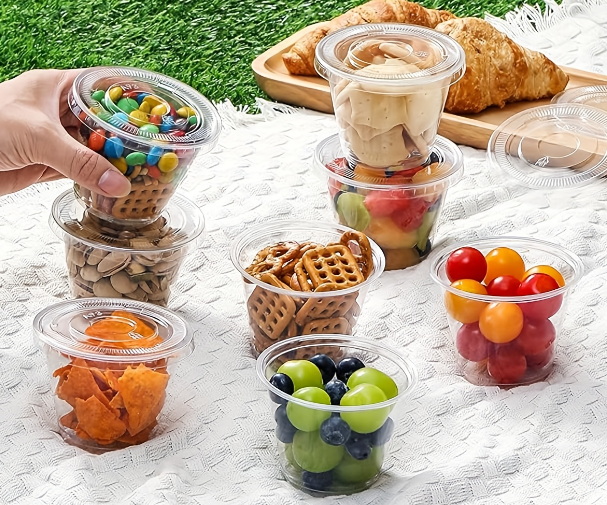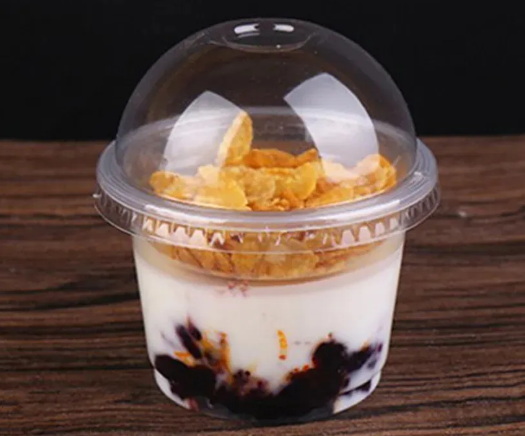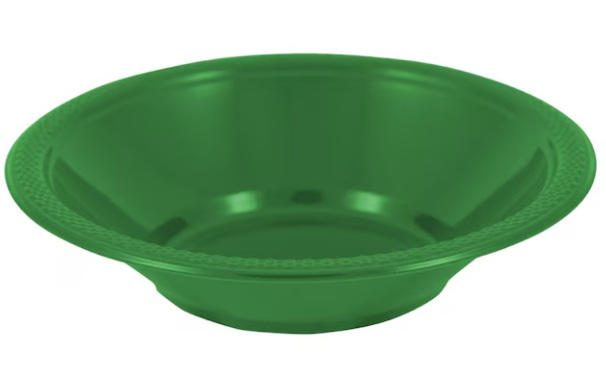
Content Menu
● Introduction to Disposable Jelly Bowls
>> Types of Disposable Jelly Bowls
● Recycling Disposable Jelly Bowls
>> Plastic Disposable Jelly Bowls
>> Paper Disposable Jelly Bowls
● Choosing Eco-Friendly Options
● Environmental Impact of Disposable Jelly Bowls
>> Plastic Pollution
>> Paper Waste
● Strategies for Reducing Waste
● Conclusion
● FAQ
>> 1. Can All Disposable Jelly Bowls Be Recycled?
>> 2. What Are the Most Eco-Friendly Disposable Jelly Bowls?
>> 3. How Do I Dispose of Disposable Jelly Bowls Properly?
>> 4. Can I Reuse Disposable Jelly Bowls?
>> 5. What Are the Benefits of Using Reusable Bowls Instead of Disposable Ones?
Disposable jelly bowls are a convenient and popular choice for serving desserts and snacks at parties, events, and even in everyday life. However, as we increasingly focus on sustainability and reducing waste, it's essential to consider the environmental impact of these disposable items. This article will explore whether disposable jelly bowls can be recycled after use, the types of materials they are made from, and how to choose more eco-friendly options.

Introduction to Disposable Jelly Bowls
Disposable jelly bowls are typically made from plastic or paper. Plastic bowls are more common due to their durability and versatility in design, while paper bowls offer a more natural look and feel. Both types are widely used for their convenience and ease of disposal, which simplifies cleanup after events.
Types of Disposable Jelly Bowls
- Material Type: Plastic and paper are the primary materials used for disposable jelly bowls. Plastic bowls are more durable and can be made in various shapes and sizes, while paper bowls are often preferred for their natural appearance and ease of writing on them.
Plastic bowls are usually made from polypropylene (PP) or polyethylene (PE), which are lightweight and resistant to moisture. However, these plastics are not biodegradable and contribute to plastic waste if not properly disposed of.
Paper bowls, on the other hand, are made from paper pulp and are generally more eco-friendly than plastic. They can be composted under certain conditions, making them a slightly better option for those concerned about environmental impact.
- Shape Type: Disposable jelly bowls come in round, square, and flower-shaped designs. Round bowls are the most common, while square and flower-shaped bowls offer a modern and elegant look. The variety in shapes allows users to choose bowls that fit their event themes or personal preferences.
- Color Type: Jelly bowls are available in a wide range of colors, from solid to gradient. These colors can enhance the presentation of desserts and match event themes. Colored bowls are particularly popular for children's parties and festive gatherings.
Recycling Disposable Jelly Bowls
The recyclability of disposable jelly bowls depends on the material they are made from and local recycling policies.
Plastic Disposable Jelly Bowls
Plastic disposable jelly bowls are generally not recyclable in standard household recycling bins. However, some communities may accept certain types of plastic containers at specialized recycling centers. It's crucial to check local recycling guidelines to determine if these bowls can be recycled in your area.
For instance, some types of plastic, such as PET (polyethylene terephthalate), are widely recyclable, but this is not typically the case for disposable jelly bowls made from other plastics like PP or PE.
Paper Disposable Jelly Bowls
Paper disposable jelly bowls might be more environmentally friendly, as they can be composted or recycled in some cases. However, their recyclability also depends on local recycling policies and whether they are made from materials that can be processed by local facilities.
Composting paper bowls requires them to be free from contaminants like food residue or wax coatings, which can hinder the composting process.

Choosing Eco-Friendly Options
For those concerned about the environmental impact of disposable jelly bowls, there are several eco-friendly alternatives:
1. Reusable Bowls: Opting for reusable plastic or glass bowls can significantly reduce waste. These bowls can be washed and reused multiple times, making them a more sustainable choice for frequent use. Reusable bowls are ideal for households or businesses that host events regularly.
2. Compostable Bowls: Some disposable bowls are made from compostable materials like PLA (polylactic acid), which can decompose under industrial composting conditions. These bowls are a good option for events where recycling facilities are available. However, they require specific conditions to break down and may not be suitable for home composting.
3. Biodegradable Materials: Bowls made from biodegradable materials like bamboo or palm leaves offer a sustainable alternative. These materials are naturally compostable and can reduce plastic waste. Biodegradable bowls are becoming increasingly popular for outdoor events and eco-conscious gatherings.
4. Edible Bowls: Another innovative option is edible bowls made from ingredients like cookie dough or bread. These bowls not only reduce waste but also provide an additional snack for guests. Edible bowls are a creative choice for themed parties or unique dining experiences.
Environmental Impact of Disposable Jelly Bowls
The environmental impact of disposable jelly bowls is significant due to their contribution to plastic and paper waste. Plastic bowls, in particular, pose a threat to marine life and ecosystems when they end up in oceans and landfills.
Plastic Pollution
Plastic pollution is a major concern globally, with millions of tons of plastic waste entering the environment each year. Disposable plastic bowls contribute to this problem by adding to the volume of non-biodegradable waste that can take centuries to decompose.
Paper Waste
While paper bowls are generally more eco-friendly than plastic, they still contribute to deforestation and resource depletion if not sourced sustainably. The production process for paper bowls also involves energy consumption and water usage.
Strategies for Reducing Waste
To minimize the environmental impact of disposable jelly bowls, consider the following strategies:
1. Reduce Use: Limit the use of disposable bowls by opting for reusable alternatives whenever possible.
2. Reuse When Possible: If disposable bowls are used, try to reuse them if they are durable enough and can be cleaned properly.
3. Recycle or Compost: Ensure that any disposable bowls that can be recycled or composted are disposed of correctly.
4. Choose Eco-Friendly Materials: Select bowls made from sustainable materials like bamboo or compostable plastics.
5. Educate Others: Raise awareness about the environmental impact of disposable bowls and encourage others to adopt eco-friendly practices.
Conclusion
While disposable jelly bowls are convenient, their recyclability varies based on the material and local recycling policies. By choosing eco-friendly alternatives like reusable or compostable bowls, individuals can reduce their environmental footprint. As consumers become more environmentally conscious, manufacturers are also shifting towards more sustainable packaging options.

FAQ
1. Can All Disposable Jelly Bowls Be Recycled?
Not all disposable jelly bowls can be recycled. Plastic bowls are generally not recyclable in standard household recycling, while paper bowls might be recyclable or compostable depending on local policies.
2. What Are the Most Eco-Friendly Disposable Jelly Bowls?
Compostable bowls made from materials like PLA or biodegradable bowls made from bamboo or palm leaves are more eco-friendly options.
3. How Do I Dispose of Disposable Jelly Bowls Properly?
Dispose of plastic bowls in the trash unless local recycling facilities accept them. Paper bowls can be composted if facilities are available.
4. Can I Reuse Disposable Jelly Bowls?
Disposable jelly bowls are designed for one-time use, but some plastic bowls might be washed and reused if they are durable enough.
5. What Are the Benefits of Using Reusable Bowls Instead of Disposable Ones?
Reusable bowls reduce waste, save money in the long run, and are more environmentally friendly compared to disposable options.

















